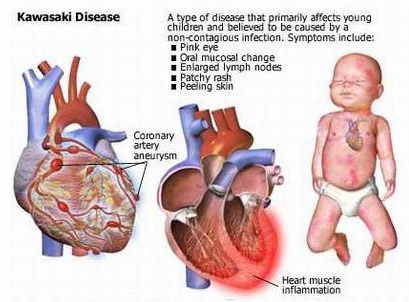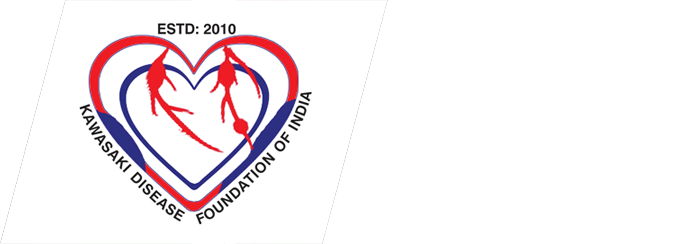About Kawasaki Disease
Kawasaki disease (KD) was first reported from Japan in 1967 by a young pediatrician, Tomisaku Kawasaki, while working at the Red Cross Hospital in Tokyo. Soon therafter, Marian Melish independently reported children with a similar clinical profile from Hawaii in the United States. KD has now been reported from all parts of the world, including several centers in India. Based on the epidemiology and clinical features, an infectious etiology has been suspected for long but no definitive causative agent has been implicated so far. Like many other vasculitides, the diagnosis of this condition is based on the recognition of a temporal sequence of clinical features, none of which is pathognomonic in isolation.
KD is believed to be the commonest vasculitic disorder of children. Incidence rates as high as 60-150 per 100,000 children below 5 years of age have been reported from several countries. In India (as also perhaps in many other developing countries), however, majority of children with KD continue to remain undiagnosed probably because of the lack of awareness amongst pediatricians. The clinical features of KD can be confused with other common conditions like scarlet fever and the Stevens Johnson syndrome, if the clinician is not careful.
 Development of Coronary Artery Abnormalities (CAA) is the hallmark of KD and accounts for most of the morbidity and mortality associated with the disease. Prompt recognition of the disease and early initiation of treatment with intravenous immunoglobulin (IVIG) results in significant reduction in the occurrence of CAA. It is, therefore, imperative for the pediatrician to diagnose and treat KD expeditiously. KD should be considered in the differential diagnosis of all febrile illnesses in young children where the fever persists for more than 5-7days.
Development of Coronary Artery Abnormalities (CAA) is the hallmark of KD and accounts for most of the morbidity and mortality associated with the disease. Prompt recognition of the disease and early initiation of treatment with intravenous immunoglobulin (IVIG) results in significant reduction in the occurrence of CAA. It is, therefore, imperative for the pediatrician to diagnose and treat KD expeditiously. KD should be considered in the differential diagnosis of all febrile illnesses in young children where the fever persists for more than 5-7days.
KD is believed to be the commonest vasculitic disorder of children. Incidence rates as high as 60-150 per 100,000 children below 5 years of age have been reported from several countries. In India (as also perhaps in many other developing countries), however, majority of children with KD continue to remain undiagnosed probably because of the lack of awareness amongst pediatricians. The clinical features of KD can be confused with other common conditions like scarlet fever and the Stevens Johnson syndrome, if the clinician is not careful.
 Development of Coronary Artery Abnormalities (CAA) is the hallmark of KD and accounts for most of the morbidity and mortality associated with the disease. Prompt recognition of the disease and early initiation of treatment with intravenous immunoglobulin (IVIG) results in significant reduction in the occurrence of CAA. It is, therefore, imperative for the pediatrician to diagnose and treat KD expeditiously. KD should be considered in the differential diagnosis of all febrile illnesses in young children where the fever persists for more than 5-7days.
Development of Coronary Artery Abnormalities (CAA) is the hallmark of KD and accounts for most of the morbidity and mortality associated with the disease. Prompt recognition of the disease and early initiation of treatment with intravenous immunoglobulin (IVIG) results in significant reduction in the occurrence of CAA. It is, therefore, imperative for the pediatrician to diagnose and treat KD expeditiously. KD should be considered in the differential diagnosis of all febrile illnesses in young children where the fever persists for more than 5-7days.





